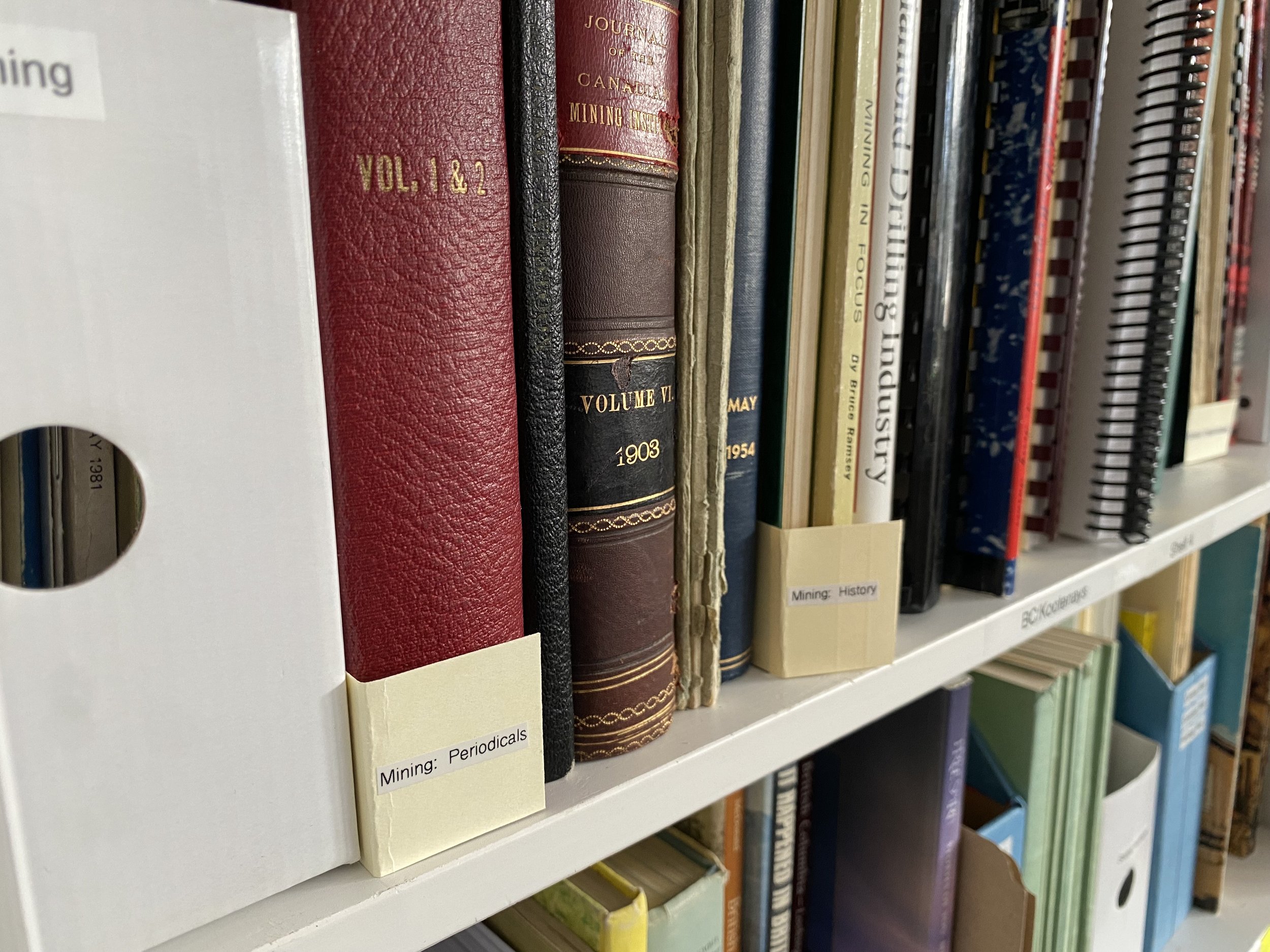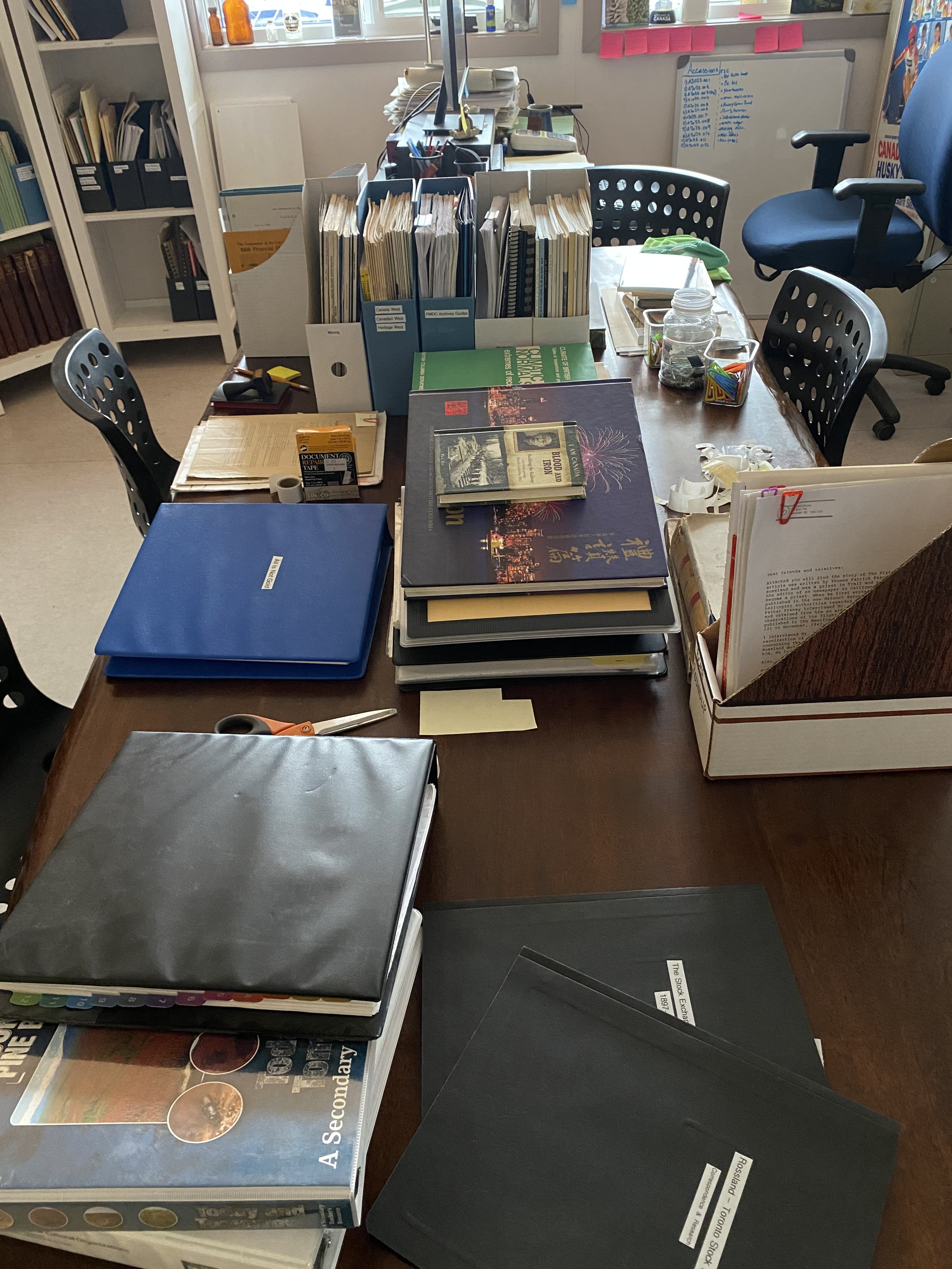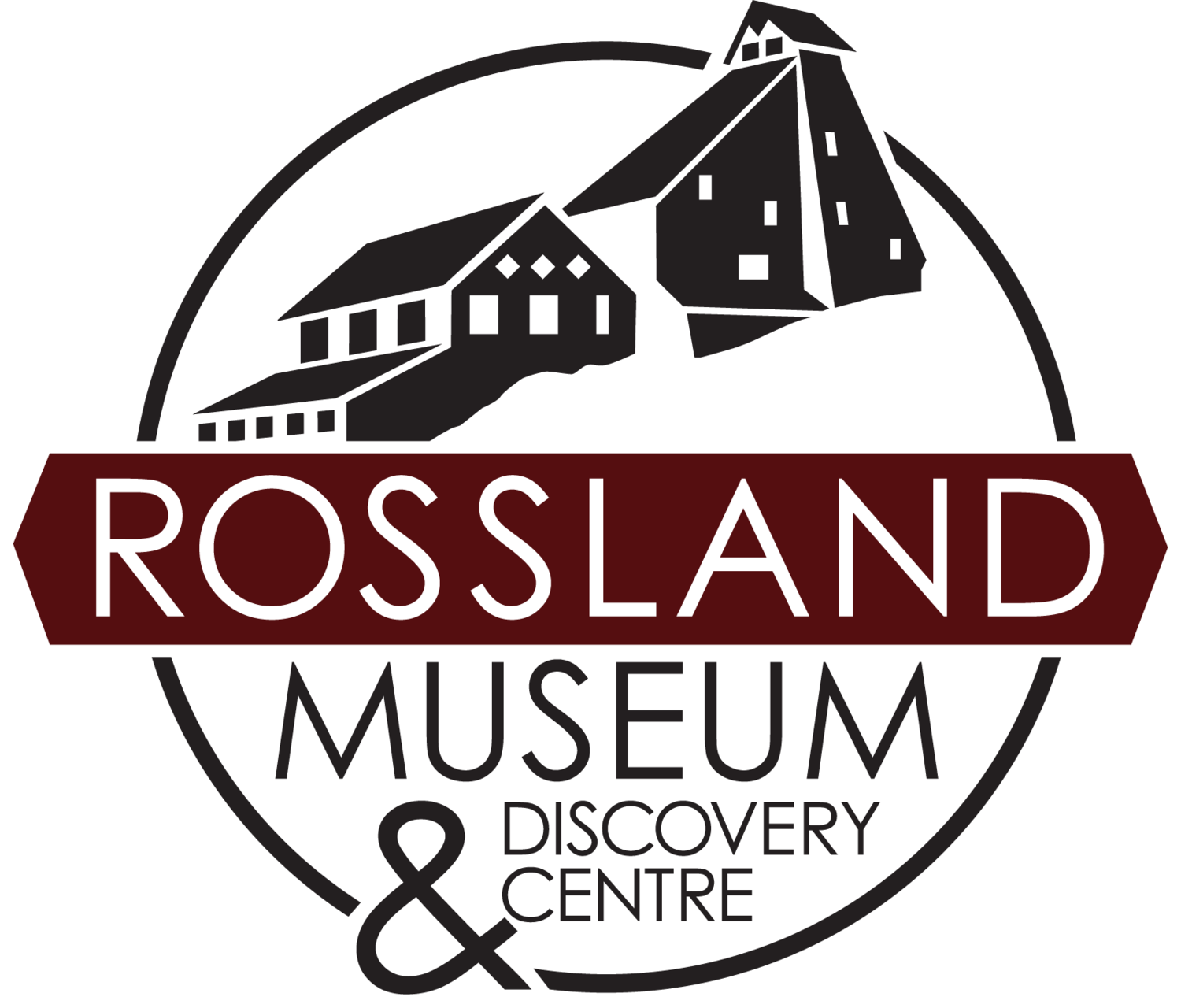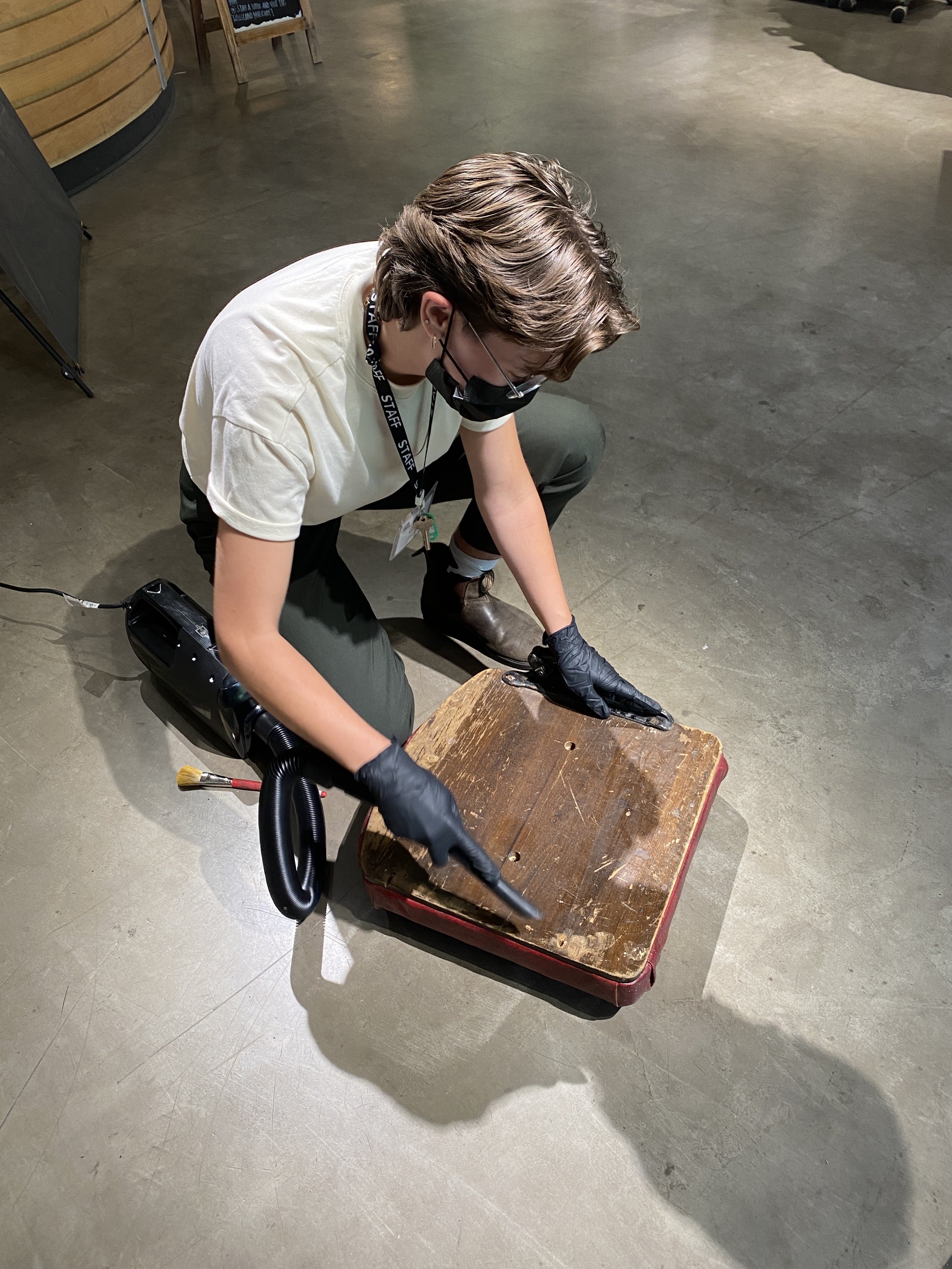Behind the Scenes: Archives Coordinator Spotlight with Gwen Friesen
“During my time at the Rossland Museum & Discovery Centre, I learned much more than archival skills. I am grateful to the RMDC staff and Rossland community for the many opportunities to learn, grow, and share in the history of this beautiful place.”
The Rossland Museum & Discovery Centre would like to thank the Government of Canada and the Canadian Museums Association’s Young Canada Works program for contributing to this paid internship opportunity.
Key Projects
Digitization Project
A major focus of all museums and heritage institutions in the digital age is increasing the accessibility of their collections. I was excited to join this ongoing project to digitize over 1,550 slides, now available online for everyone! Using a variety of technologies including scanning and photography, I worked to create digital versions of slides in a variety of mediums, from obscure format film to glass plate negatives. This project included plenty of problem-solving challenges, including how to digitize obscure photography mediums without damage and how to store and handle different photographic mediums properly. In the end, I digitized over 750 unique images, processed the cataloguing paperwork for each image, and prepared them to be uploaded onto our database. This project was a wonderful immersion into Rossland’s history and a crash course in all things digitization.
A2022.029.063 - 1967 Sno Sho
An additional benefit of digitizing photos is preservation. Various forms of damage and determination become obvious while handling the film which allows us to take steps to prevent further damage and retain a digital copy of that image.
Most of the digitized images were 35mm slides like this one from the 1967 Rossland Winter Carnival. Over time, the film’s yellow and cyan color layers faded, leaving a distinct magenta hue.
Processing New Archival Materials
Arranging MS 146: the collection of Thomas Patrick Freney, the author of The Flying Steamshovel story!
During my internship, I had the opportunity to experience the day-to-day operations of a small archive. Mentored by our Collections Manager, Sara Wright, I processed donations, built archival collections, sorted items, monitored the climate, and ensured correct storage, care, and handling of materials. I grew comfortable making decisions about how incoming materials were to be organized, identified gaps in our collections, and improved the functionality of the physical archival space.
My favourite aspect of this work (and archives in general) is problem-solving for organization. Thinking through the archival standards (“Rules for Archival Description” or RAD) and how they fit with RMDC’s procedures is only part of the answer. Designing for humans is the other half: thinking through what will be accessed frequently, what headings and standardized terms to use, where and how to store things, how to create short and informative descriptions, and more. Archival work is a multitude of different roles disguised as one; I get to be a detective, a custodian, a puzzle solver, a conservator, and so much more every day.
The Research Library





Since I arrived at RMDC, I couldn’t get the research library out of my head. After a few weeks of observing how staff interacted with the collection and attempting to shelf browse myself, I decided to reconsider the current organization system, and it proved a fantastic learning opportunity. The intention of the research library is both for staff/volunteer use and for general community use with public research requests and research appointments. Carefully considering both how people use this space for research and the types of publications in this collection allowed me to implement a system that will promote the use of reference materials and increase shelf browsing. Among the many interesting parts of this project, some of my favourite materials I stumbled across included a suede-covered book of prospector’s songs, a Christmas greeting postcard from 1934 being used as a bookmark, and 20 volumes of a mysterious Norwegian publication from the 1920s.
Smaller Projects & Everything Else
Between helping out with seniors’ workshops, managing research requests, and helping with outreach exhibits, I had the opportunity to meet so many lovely community members, business owners, and visitors here in Rossland. It was wonderful to see how people engage with the museum and archives and how heritage institutions can play a big role in fostering community.
Cleaning mold from a theatre seat
The Genealogy Club meets monthly at the Museum
Teaching digitization skills during a Seniors’ Workshop
Ready for Halloween at the RMDC
The time I spent at the RMDC taught me so much. I arrived prepared to absorb everything I could about archives and archival management but left with so much more than just that. I learned how to look for and clean mold, developed and ran a workshop activity on caring for photographic materials, and improved my genealogy research skills. I also learned how to repair books and textual documents, how to store textiles, what archival materials to use, and what to avoid — and of course, everything I know about mines and skiing has been learned over these past few months. I am grateful for the hundreds of opportunities afforded to me by the amazing staff here at the Museum and the kindness shown to me by this community. I will miss this beautiful town!








